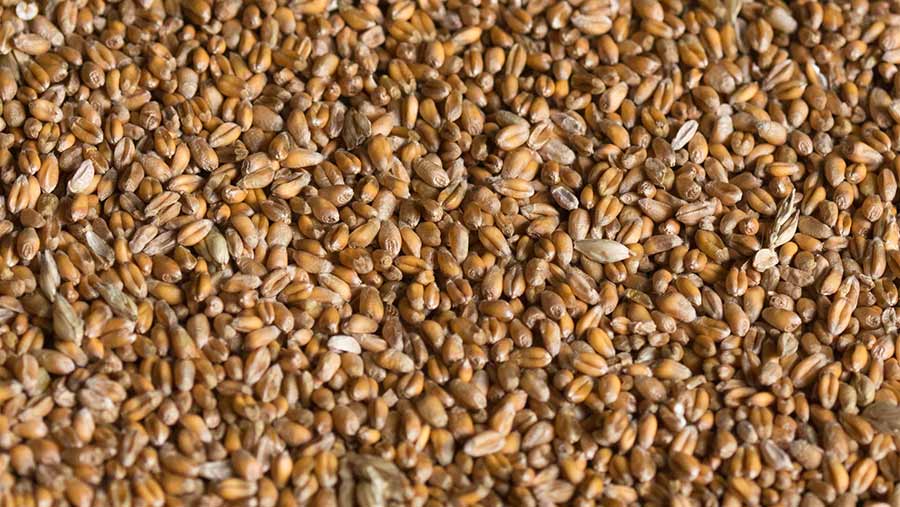The importance of larger seed sizes for farm-saved seed
 © Tim Scrivener
© Tim Scrivener Farm-saved seed can be an effective way to minimise growing costs, but processing is vital in order to select the most viable seed with the greatest growth and yield potential.
Latest trial results reveal that selecting larger seed sizes can help improve crop emergence, tillering and overall crop yield.
While commodity prices remain at record levels, growing costs are equally high, which means minimising risk wherever possible.
Quality processed farm-saved seed can help reduce risk and maximise the efficacy of crop inputs and ultimately yield.
See also: Big N fertiliser savings in milling wheat with polysulphate
The trial
Commissioned by the National Association of Agricultural Contractors with trials specialist SGS United Kingdom, the trial investigated the impact of seed size on a number of crop traits and yields in winter wheat and spring barley.
Seeds were sorted by size into four different fractions – >2.8mm, 2.8-2.5mm, 2.5-2.2mm and <2.2mm – and drilled in field trial conditions at a site in Warwickshire.
Plots were 12m long by 2.1m wide and the trial investigated both treated and untreated seeds of each fraction size.
The winter wheat trial was established on 14 October and the effects on emergence, height, vigour and root and shoot weights were monitored, before harvest on 28 July.
Wheat results
Overall, the highest size wheat fractions resulted in the highest yield, with 8% greater yield when compared with the smallest fraction.
Specific weight also increased with larger fraction size, giving a 1.25% greater weight than the lowest fraction.
This may have been due to the improved vigour, emergence, crop height and rooting weight throughout the growing season, explains Howard Hilton, UK crop science manager for SGS, who carried out the trials.
He notes that the impact on straw yield seemed to be the most prominent.
“The larger the seed fraction, the greater the volume of straw produced. A 26% difference between the highest and lowest fractions’ straw yield was found.”
Despite the low disease risk this year, there appeared to be a benefit from using a seed treatment compared with the corresponding untreated fraction.
However, there were no significant differences for reduced ear count/sq m with decreasing fraction size, and there were no differences when it came to 1,000 grain weight or post-harvest fractional analysis of grain.
He highlights that due to the higher-than-average temperatures and the subsequent drought stress, the differences between treatments were not so apparent as originally expected.
Spring barley
Field trials on the impact of seed size in spring barley revealed a similar story, but the findings were less significant.
Howard Hilton, crop science manager at SGS United Kingdom, explains that the spring barley crops seemed to compensate for yield in the hot and dry conditions to a greater extent than the wheat.
Fractional analysis of the harvested grain indicated the lower drilled fractions appeared to compensate for a thinner crop by producing a higher proportion of large grains than the largest drilled fractions.
“It is anticipated that due to higher-than-average temperatures and crop stress via the drought, the difference between treatments were perhaps not as great as a typical year. Certainly, for assessments of yield, this may have masked any yield differences,” he says.
The trial was planted on 8 March and harvested on 1 August. Mr Hilton says there were trends to suggest larger size fractions produced a greater final ear count/sq m and greater straw weight, but these were minimal.
There were no significant differences between specific weights, but a small increase in this variable for treated seed grain compared with untreated seed was noted.

